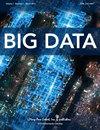Factors Affecting the use of Smartphones for Learning: A Proposed Model
IF 2.6
4区 计算机科学
Q2 COMPUTER SCIENCE, INTERDISCIPLINARY APPLICATIONS
引用次数: 0
Abstract
Increased functionalities of smartphones, such as providing easy access to the internet, have offered multiple learning opportunities, especially in a world surrounded by unprecedented periods like COVID'19. Despite the benefits of smartphones mentioned above, academics still have significant concerns about the effective utilisation of these technological devices by students for learning purposes. This paper aims to examine the factors affecting the use of smartphones for learning. The study utilised a quantitative method to pursue its aim and objectives. Data were gathered from 80 academic staff members from five Departments under the Faculty of Accounting & Informatics. A stratified sampling approach was applied to ensure a more realistic and accurate estimation of the population had been used. After applying the above approach, a simple random sampling method was used for this population according to the number of academic staff members in the above-mentioned departments. The data were analysed to ensure reliability and validity, and descriptive statistics were applied, and correlations identified to develop the proposed model. The outcomes indicate that academic staff members believe that Attitudes towards Smartphones, Facilitating Conditions, Perceived Ease of Use, Perceived Usefulness, and Performance Expectations significantly impact the use of smartphones for learning. This study was limited to academic staff from five departments of a single faculty at a South African University of Technology.影响使用智能手机学习的因素:一个建议的模型
智能手机功能的增加,例如提供便捷的互联网接入,提供了多种学习机会,特别是在一个被COVID - 19这样前所未有的时期包围的世界。尽管上面提到了智能手机的好处,但学者们仍然对学生有效利用这些技术设备进行学习表示严重担忧。本文旨在研究影响使用智能手机学习的因素。这项研究采用了定量方法来实现其目的和目标。数据收集自会计与信息学院五个系的80名教职员。采用了分层抽样方法,以确保对所使用的人口作出更现实和准确的估计。应用上述方法后,根据上述院系教学人员的数量,对该人群采用简单随机抽样的方法。对数据进行分析以确保可靠性和有效性,并应用描述性统计,并确定相关性以开发所提出的模型。研究结果表明,学术人员认为,对智能手机的态度、便利条件、感知易用性、感知有用性和性能期望显著影响智能手机在学习中的使用。这项研究仅限于南非科技大学一个学院的五个系的学术人员。
本文章由计算机程序翻译,如有差异,请以英文原文为准。
求助全文
约1分钟内获得全文
求助全文
来源期刊

Big Data
COMPUTER SCIENCE, INTERDISCIPLINARY APPLICATIONS-COMPUTER SCIENCE, THEORY & METHODS
CiteScore
9.10
自引率
2.20%
发文量
60
期刊介绍:
Big Data is the leading peer-reviewed journal covering the challenges and opportunities in collecting, analyzing, and disseminating vast amounts of data. The Journal addresses questions surrounding this powerful and growing field of data science and facilitates the efforts of researchers, business managers, analysts, developers, data scientists, physicists, statisticians, infrastructure developers, academics, and policymakers to improve operations, profitability, and communications within their businesses and institutions.
Spanning a broad array of disciplines focusing on novel big data technologies, policies, and innovations, the Journal brings together the community to address current challenges and enforce effective efforts to organize, store, disseminate, protect, manipulate, and, most importantly, find the most effective strategies to make this incredible amount of information work to benefit society, industry, academia, and government.
Big Data coverage includes:
Big data industry standards,
New technologies being developed specifically for big data,
Data acquisition, cleaning, distribution, and best practices,
Data protection, privacy, and policy,
Business interests from research to product,
The changing role of business intelligence,
Visualization and design principles of big data infrastructures,
Physical interfaces and robotics,
Social networking advantages for Facebook, Twitter, Amazon, Google, etc,
Opportunities around big data and how companies can harness it to their advantage.
 求助内容:
求助内容: 应助结果提醒方式:
应助结果提醒方式:


